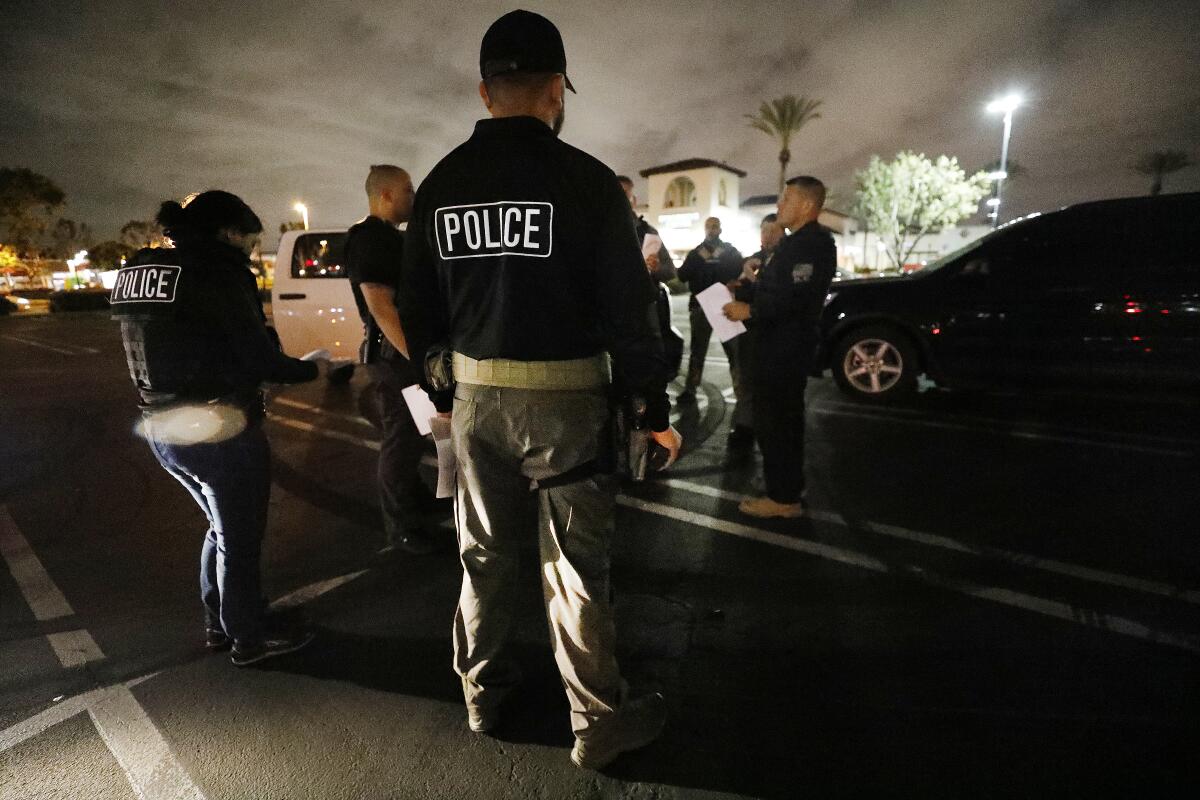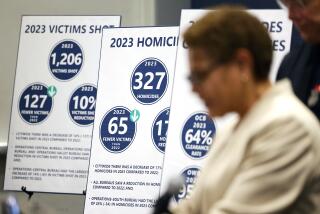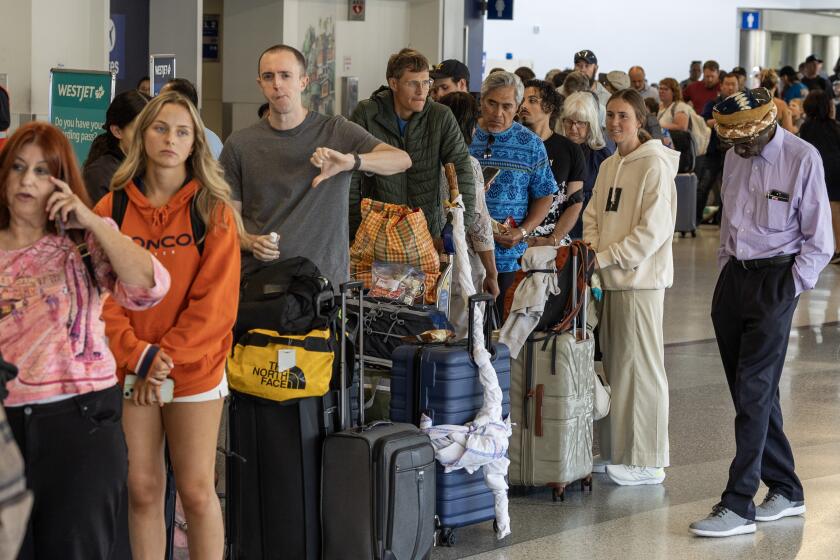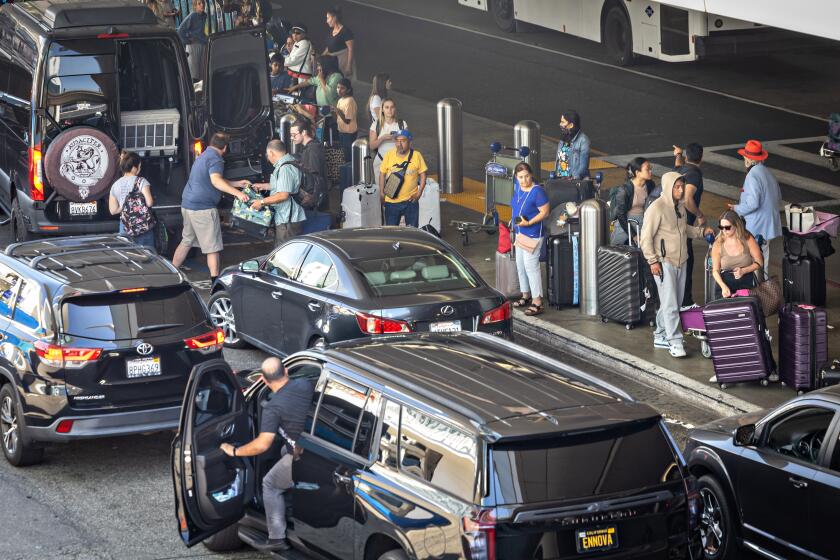Amid pandemic, ICE arrests in Los Angeles drop by about 65%

Immigration and Customs Enforcement officers have made significantly fewer arrests in the Los Angeles area over the last month, after the agency announced a shift in focus due to the COVID-19 pandemic.
ICE made about 65% fewer arrests in the L.A. area in April than it did in March, according to the agency. ICE recorded 230 arrests in March, compared with approximately 80 arrests in April.
The agency came under fire nationwide in March for continuing to make arrests as states went on lockdown and ordered residents to shelter at home. The Times reported on ICE arrests in the L.A. area early that month. In response, Mayor Eric Garcetti said those operations created “unnecessary fear and panic in those very same families we are trying to protect.”
“Additional fear at a moment of extreme fear is the last thing that families need to face,” he said during a media briefing at the time.
Soon after, ICE announced it would shift its focus to “public safety risks.”
The agency said it would also zero in on those subject to mandatory detention based on criminal grounds. For those who didn’t fall into those categories, ICE said it would “exercise discretion to delay enforcement actions until after the crisis or utilize alternatives to detention, as appropriate.”
“Despite the challenges that COVID-19 has presented, our officers have maintained the utmost professionalism and vigilance during this chaotic time to make arrests that have helped ensure the safety and security of our communities,” David Marin, the director of enforcement and removal operations for ICE in L.A., said in a statement.
The focus for ICE agents in the L.A. area includes targeting those suspected or convicted of murder, rape, sexual abuse of a minor, drug offenses, human smuggling, fraud and theft, according to the agency.
Those arrested in recent weeks included a 38-year-old Salvadoran national wanted in an aggravated homicide, a 32-year-old French national wanted for allegedly making threats and committing fraud, and a 63-year-old Mexican national wanted in connection with sexual assault, carnal abuse and burglary, according to the agency.
On April 24, an ICE special response team arrested Julio Garcia-Castellano, one of ICE’s Most Wanted fugitives, during a targeted operation near South Gate. Garcia-Castellano, also known as Victor Garcia Ignacio, was convicted of second-degree rape in February 2010.
Garcia-Castellano was arrested by the California Highway Patrol on suspicion of driving under the influence in December, according to ICE. Those charges are pending.
“This case is an incredible example of our ongoing commitment to prioritize enforcement and removal efforts against any unlawfully present criminal aliens who pose the greatest threat to public safety,” Marin said in a statement.
Despite the drop in at-large arrests, there are still concerns over inmates being transferred into federal immigration detention centers and the potential for coronavirus outbreaks in those facilities.
The American Civil Liberties Union filed a pair of lawsuits last week calling for a dramatic reduction in the state’s incarcerated population and a halt to all transfers of inmates to federal immigration detention centers amid increasing signs throughout the U.S. that jails and prisons are hot zones for the spread of the coronavirus.
The suits filed with the California Supreme Court name Gov. Gavin Newsom and Atty. Gen. Xavier Becerra and come as the Otay Mesa Detention Center in San Diego and Lompoc penitentiary in Santa Barbara County have become home to some of the worst coronavirus outbreaks in the federal prison system.
Transfers from California prisons and jails now represent the “primary source of ICE’s new bookings” in the state, according to the suit, which argues that federal and state law do not obligate transfers to ICE.
“In other words, it is the actions of the state of California, more than actions of ICE at this unique moment, that are keeping a flow of new people into ICE detention facilities,” the suit alleged.
More to Read
Sign up for Essential California
The most important California stories and recommendations in your inbox every morning.
You may occasionally receive promotional content from the Los Angeles Times.







